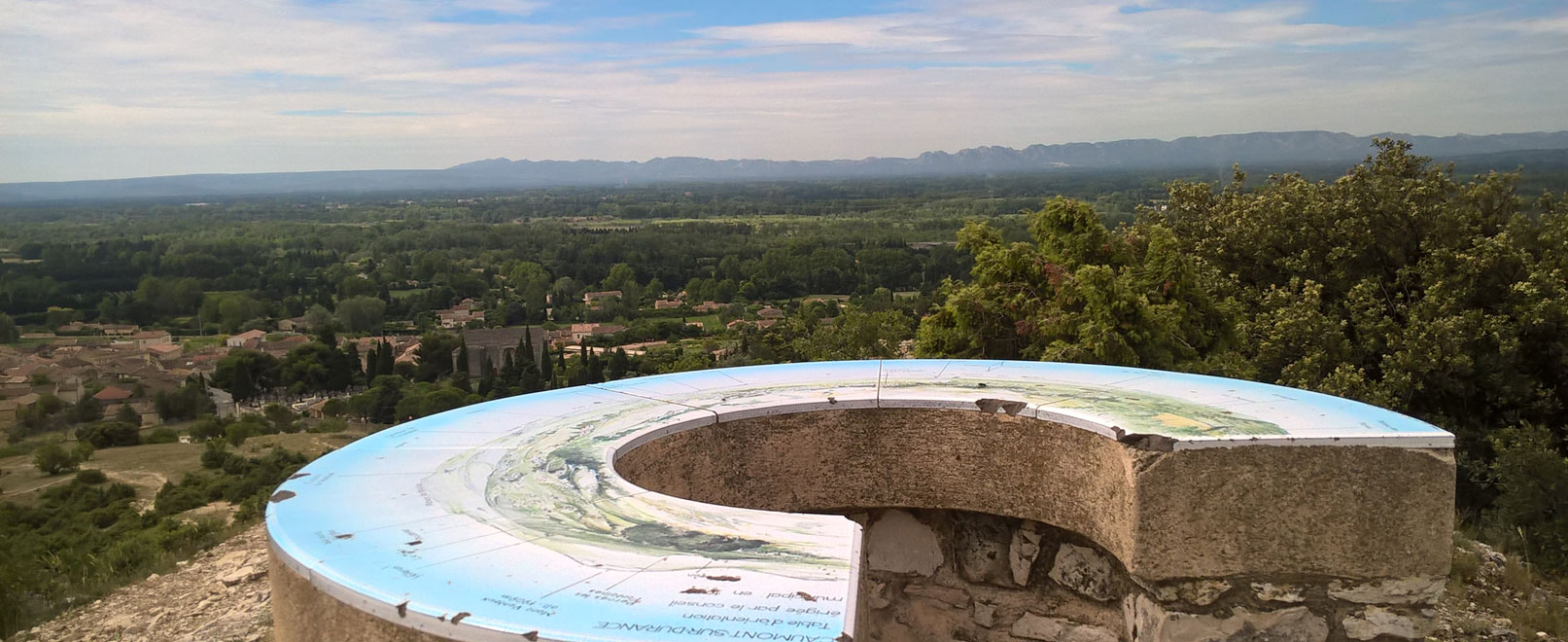
Colline de Piécaud and Sentier de Garance
To alternate walks between towns and walks in the countryside…
The discovery of Colline de Piécaud in Caumont-sur-Durance was a true breath of fresh air during our holiday in Avignon. Yes, you can find beautiful excursions in the heart of the Provençal scrubland, just 15 minutes from its ramparts! Renowned for its biodiversity, this natural enclave is the setting for an easy, enjoyable and educational walk that will satisfy the whole family. While the panoramic view is worth the detour in itself, botanical wealth is the common theme of this fun exploration. An ideal plan for improvising a random short escape near the town…
Duration:
1 hour
Type:
Hiking
Parking :
free
Amazing views!
An easy ascent
A pebbly path leaves the cemetery car park where we left the car. We have no problems with the ascent and we begin with full momentum. Very shortly, we have already reached the orientation board. And there, we find an incredible surprise…
At just 134m altitude, we gaze over the emblematic reliefs of Provence. The highlight is the legendary silhouette of Mont Ventoux! The oblique light of this November afternoon shines on the whole horizon, the plateaus of Vaucluse, the Luberon, the plain of the Durance, to the Alpilles…
It is a beautiful autumn sunlight which shows us this 360º spectacle. The landscape evolves as the hours go by and it is not quite the same on the way back.

Photo
All along the route, benches are installed facing the panorama. Stops are truly dedicated to contemplation, these rest and observation areas offering superb views.
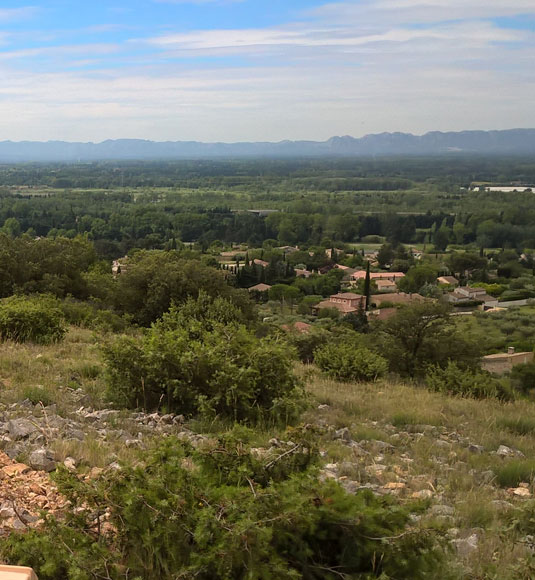
Protected space and marked trail
On Colline de Piécaud, classified as a Sensitive Natural Space, circulation in motor vehicles is prohibited. We appreciate this reassuring rule, because we are accompanied by intrepid children.
Marked in green, dotted with 17 educational panels, the botanical trail guides our way. It is a beautiful loop which allows us to observe the plant species of the location. Very well designed for children, adults can also learn a lot from this route.
We now know how to recognise cistus and genistas, and distinguish the leaves of phillyrea from those of the olive tree. We now know all about oaks, pines and bay trees, and our little ones have learned to identify the common smilax!
The circuit is not long, around one hour. Unless, like us, your fun and games make it last longer.
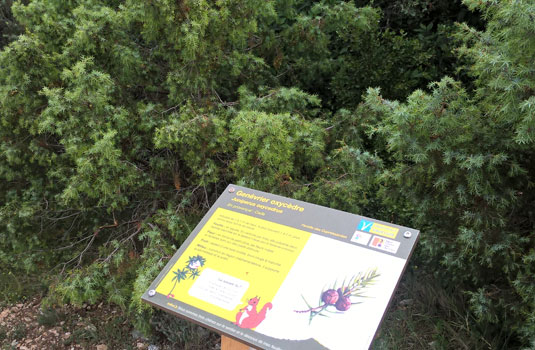

Practical information
To take the botanical trail, continue walking at the top of the hill. The markings begin beyond the orientation board.
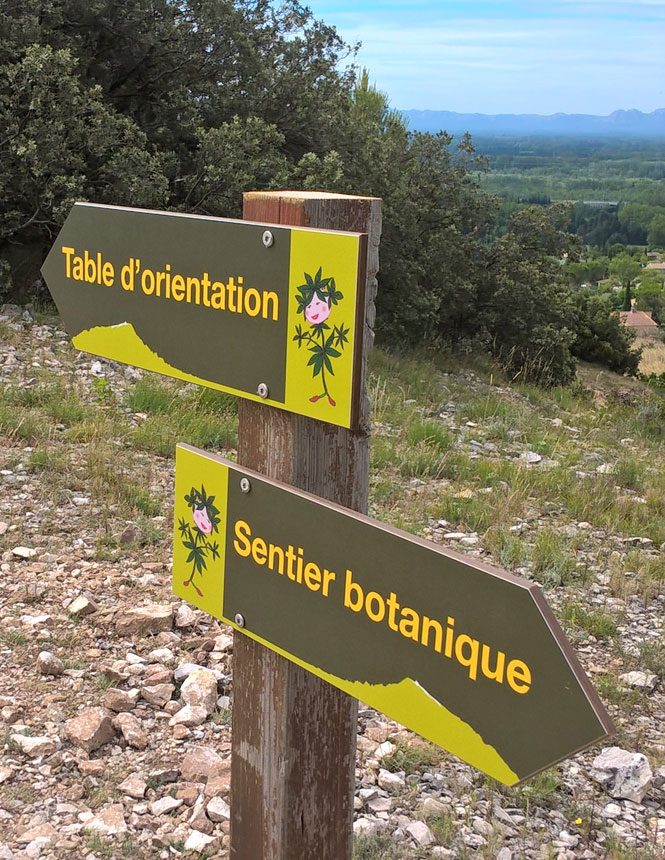
Botany lesson
The common madder
Among the botanical species along the trail is the common wild madder. This typically Mediterranean plant is the emblem here! It appears on all the signs and we have found out why!
Used for the red dye in its roots, the dyer’s madder had a spectacular boom in the 19th century in France. Vaucluse was not only the main growing location; Caumont-sur-Durance itself was the original location for this crucial activity for the region.
From Althen-les-Paluds to the banks of the Rhône, the landscapes evoke the history of this industrial miracle, the fanciful life of one man and the audacity of another – because Armenian traveller Jean Althen and the Marquis of Caumont actively contributed to the use of this landscape.

Allusions
Two invaluable testimonies to this incredible industrial saga are preserved in the old town of Avignon: the waterwheels of Rue des Teinturiers and the statue of Jean Althen in its place of honour in the Jardin du Rocher des Doms.
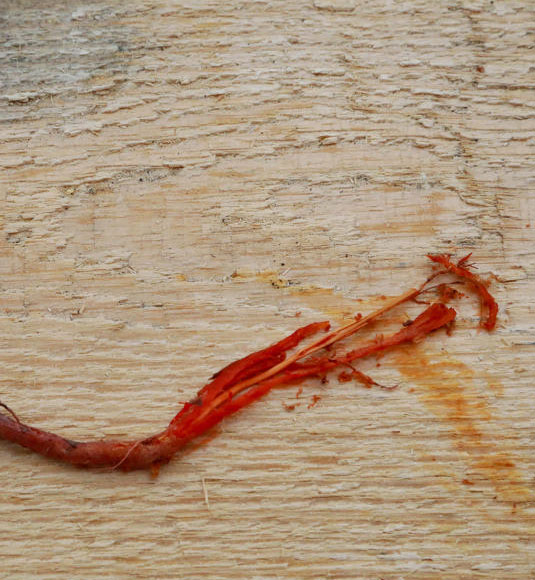
The Roman Garden
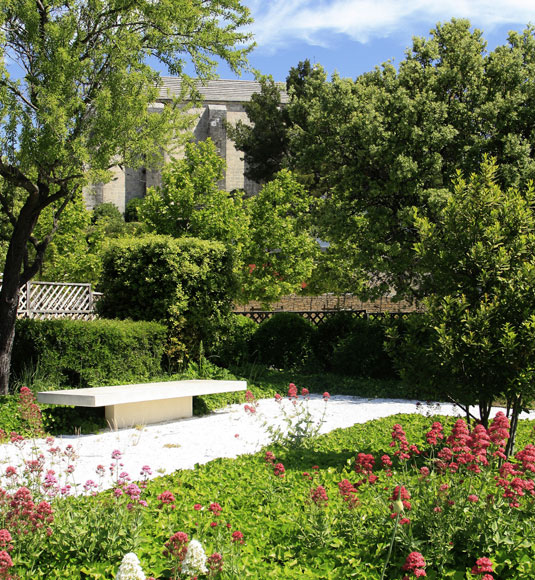

Fall in love…
Between the car park and the Roman Garden, at the foot of the Saint Symphorien chapel, a picnic table is set out between the meadows. Savour a snack below the blue sky, between ancient stones, cypresses and olive trees…
To extend the visit
Before returning to the car, we circled the cemetery to access the Roman Garden. Set out around the remains of a 1st century Roman villa, this vast, enclosed, peaceful space gives us a chance to continue our discoveries. Blending ancient history and botany, the garden is organised on either side of a long pond. Here, the educational route forges a link between nature and the gods. Which plants represent Jupiter, Apollo or Minerva? Which god does the grapevine symbolise? What is the story of Ariadne’s son evoked by this boxwood maze? An amusing and topical brainstorming exercise for history and mythology lovers!
With its rope structures, the play area and the climb to the location dedicated to brainstorming…
Such a rich and active itinerary without a long route was what really delighted us.